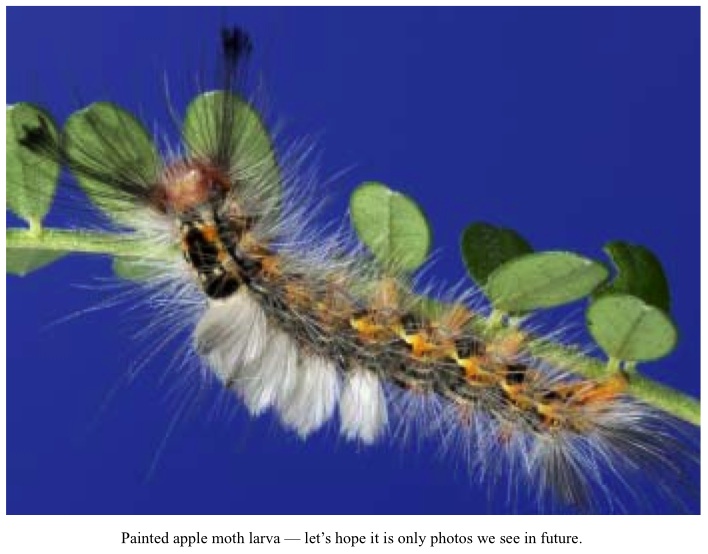PESTS AND DISEASES OF FORESTRY IN NEW ZEALAND
Painted apple moth eradicated
Scion is the leading provider of forest-related knowledge in New Zealand
Formerly known as the Forest Research Institute, Scion has been a leader in research relating to forest health for over 50 years. The Rotorua-based Crown Research Institute continues to provide science that will protect all forests from damage caused by insect pests, pathogens and weeds. The information presented below arises from these research activities.
From Forest Health News 160, March 2006.
On 20 March the Ministry of Biosecurity New Zealand officially declared the West Auckland and Mt Wellington populations of the painted apple moth (Teia anartoides) eradicated. No moths linked to the original populations had been detected in these areas for 2 years. The moth was first found in Auckland in 1999 and since that time parts of Auckland were aerially sprayed up to 69 times.
The Ministry of Agriculture and Forestry estimated its potential economic impact at between $58 million and $356 million over 20 years if it became widely established, not counting potential impacts on market access or the conservation estate. It cost $62.4 million to eradicate. The trapping and monitoring programme will remain in place for some time. For further details see the MAF website.

This information is intended for general interest only. It is not intended to be a substitute for specific specialist advice on any matter and should not be relied on for that purpose. Scion will not be liable for any direct, indirect, incidental, special, consequential or exemplary damages, loss of profits, or any other intangible losses that result from using the information provided on this site.
(Scion is the trading name of the New Zealand Forest Research Institute Limited.)



